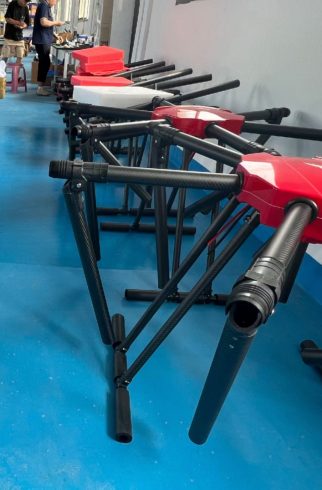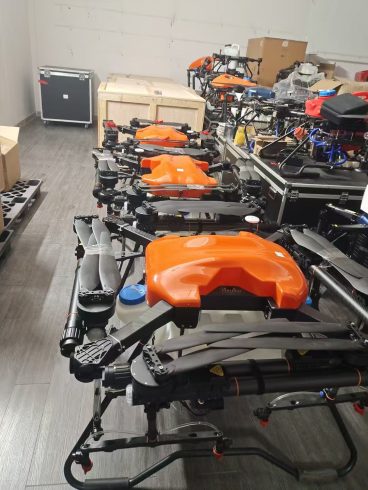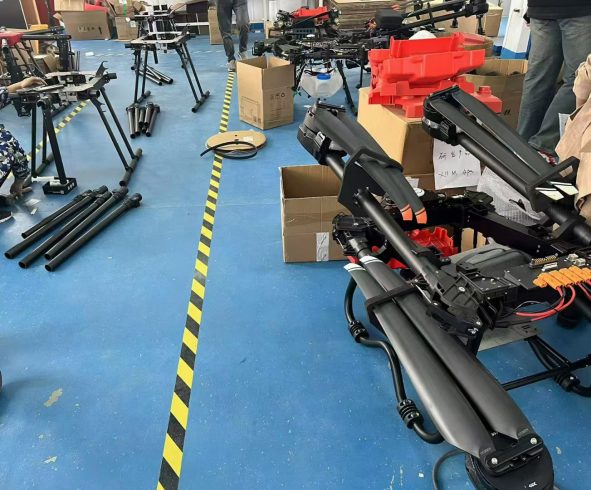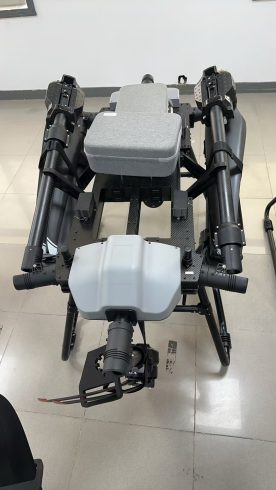![图片[1]-Precision in Every Drop: The Critical Role of Drone Calibration for Accurate Spraying-msoen](https://www.msoen.com/wp-content/uploads/2025/02/0f1391077c98-1-1024x769.jpg)
![图片[2]-Precision in Every Drop: The Critical Role of Drone Calibration for Accurate Spraying-msoen](https://www.msoen.com/wp-content/uploads/2025/03/2e999feb0e8b-1024x769.jpg)
![图片[3]-Precision in Every Drop: The Critical Role of Drone Calibration for Accurate Spraying-msoen](https://www.msoen.com/wp-content/uploads/2025/03/6294a90b8534-1024x576.jpg)
Unlock the secrets to flawless agricultural drone spraying with expert insights on calibration techniques. Learn how proper sensor alignment, nozzle adjustments, and flight parameter optimization ensure precision, reduce waste, and maximize crop yields.
Precision in Every Drop: The Critical Role of Drone Calibration for Accurate Spraying
Agricultural drones have revolutionized crop management, but their precision hinges on one often-overlooked factor: calibration. Even the most advanced drones fail to deliver optimal results if their sensors, nozzles, or software are misaligned. Inaccurate spraying wastes chemicals, damages crops, and erodes profitability. This article dives into the science of drone calibration, offering step-by-step guidance to achieve flawless application accuracy.
Why Calibration Matters for Spraying Drones
Calibration ensures drones deliver the right amount of chemical to the right place at the right time. Without it:
- Over-application wastes chemicals, raising costs and polluting ecosystems.
- Under-application leaves crops vulnerable to pests and diseases.
- Drift contaminates non-target areas, triggering regulatory penalties.
Studies show that proper calibration can reduce chemical use by 30–50% while boosting yield by 15% through uniform coverage.
Key Components Requiring Calibration
- Sensor Calibration
Drones rely on sensors to map fields and adjust spray patterns.
- Multispectral Cameras: Calibrate to detect crop health variations (e.g., NDVI thresholds).
- LiDAR: Align to measure canopy height and terrain elevation accurately.
- GPS/RTK Modules: Ensure sub-centimeter positioning for strip-specific applications.
Frequency: Recalibrate sensors every 50 flight hours or after environmental changes (e.g., extreme heat).
- Nozzle and Flow Rate Adjustment
- Droplet Size: Match nozzle type (e.g., flat-fan for row crops) to droplet size (200–400 µm for herbicides).
- Flow Rate: Calibrate pumps to deliver 1–5 L/ha based on crop density and nozzle pressure.
- Spray Angle: Adjust nozzles to avoid crop canopy overlap or gaps.
Tool Tip: Use a flow meter to validate output against manufacturer specifications.
- Flight Parameter Optimization
- Altitude: Set 1–3 meters above canopy to balance drift and coverage.
- Speed: Adjust between 5–10 m/s based on nozzle type and crop height.
- Swath Width: Sync with nozzle overlap to ensure even distribution.
Step-by-Step Calibration Process
- Pre-Calibration Checklist
- Clean sensors, nozzles, and cameras to remove debris or chemical residue.
- Ensure batteries are fully charged and at optimal temperature (20–25°C).
- Update firmware and flight control software.
- Static Calibration
- Nozzles: Mount on a flow bench to measure output at target pressures.
- Sensors: Use calibration targets (e.g., checkerboard for cameras) in controlled lighting.
- GPS: Validate positional accuracy using RTK base stations.
- Dynamic Calibration
- Test Flight: Fly a grid pattern over a calibration field with known dimensions.
- Data Analysis: Use software to compare sprayed patterns with ground-truth measurements.
- Adjustments: Fine-tune nozzle angles, flow rates, or flight paths based on discrepancies.
Advanced Calibration Techniques
- AI-Powered Auto-Calibration
Machine learning algorithms analyze flight data to auto-adjust nozzle settings and flight paths. For example:
- Adaptive Swath Control: Adjusts swath width based on real-time wind speed.
- Canopy Recognition: Modifies spray density in dense vs. sparse regions.
- Environmental Compensation
- Wind Sensors: Automatically tilt nozzles downward during gusts to minimize drift.
- Humidity Sensors: Slow nozzle oscillation in high-humidity conditions to prevent droplet coalescence.
- Swarm Calibration
Fleets of drones share calibration data to optimize performance across heterogeneous fields.
Case Study: Calibration Boosts Soybean Yields
A 2023 project in Brazil’s Mato Grosso region highlighted calibration’s impact:
- Problem: Uneven glyphosate application caused crop damage and weed resistance.
- Solution: Weekly sensor and nozzle calibration using drone analytics software.
- Result:
- Chemical waste reduced by 40%.
- Soybean yield increased by 18%.
- Herbicide resistance delayed by 2 growing cycles.
Common Calibration Pitfalls
- Ignoring Sensor Drift
- Issue: LiDAR sensors drift over time, causing elevation miscalculations.
- Fix: Recalibrate after every 10 flights or during temperature swings.
- Overlooking Nozzle Wear
- Issue: Eroded nozzles alter flow rates, leading to under-application.
- Fix: Replace nozzles every 200 hours or when flow rates deviate by >10%.
- Incorrect Flight Speed
- Issue: Flying too fast causes streaked coverage; too slow wastes chemicals.
- Fix: Use flight controllers with auto-throttle based on nozzle pressure.
The Future of Drone Calibration
Emerging technologies promise smarter, automated workflows:
- Self-Calibrating Nozzles: Embedded sensors adjust flow rates in real time.
- Digital Twins: Virtual models simulate spray patterns to pre-optimize settings.
- Blockchain-Verified Calibration Logs: Ensure compliance with regulatory standards.
Conclusion
Calibration is the invisible force behind every successful drone spraying operation. By mastering sensor alignment, nozzle adjustments, and dynamic flight parameters, farmers can achieve unmatched precision, reduce costs by up to 50%, and safeguard ecosystems. As AI and swarm technologies mature, calibration will transition from a manual task to an automated cornerstone of sustainable agriculture. For drone operators, neglecting calibration isn’t just a technical oversight—it’s a threat to profitability and planetary health.
Target Keywords: drone calibration for spraying accuracy, agricultural drone sensor calibration, nozzle flow rate adjustment, precision farming techniques, drift reduction strategies












暂无评论内容